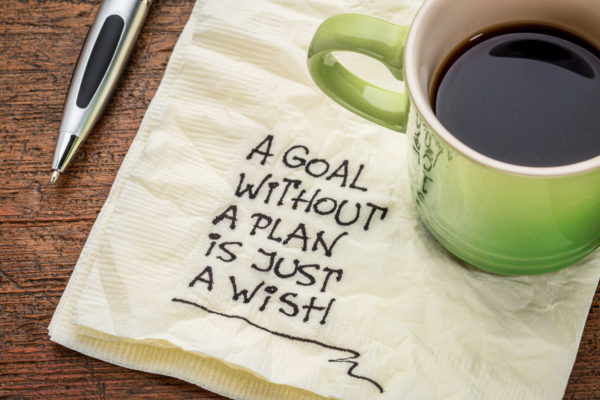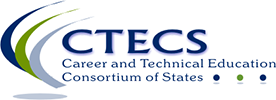Summary
In this activity, students learn the importance of goal setting and how to set and revise their goals. The completed worksheet will help them discover who they are and what they really want. Primary long-term goals are set, types of goals are described, and shorter goals are set to support the long-term.
Learning Objectives
Students will be able to:
- recognize the importance of education and career planning (e.g., minimum job qualifications, advancement and professional-development opportunities)
- identify available benefits and professional resources (e.g., labor unions, professional organizations, employee-assistance programs, insurance and retirement benefits)
- manage personal growth and wellness (e.g., stress management, self-care, financial planning)
- set goals (e.g., specific, measurable, attainable, realistic, time-bound [SMART] goals)
Correlations:
This activity was created to be used primarily with:
- WRS: 12. Career and Life Management
- CCRA: 3. Develop an education and career plan aligned to personal goals
- CCRA: 6. Practice personal health and understand financial literacy
Secondary WRS skills include:
- 1. Creativity and Innovation
- 2. Critical Thinking and Problem Solving
- 3. Initiative and Self-Direction
- 4. Integrity
- 5. Work Ethic
- 11. Big-Picture Thinking
- 13. Continuous Learning and Adaptability
- 20. Professionalism
- 21. Reading and Writing
Icebreaker
Journal: What are your life goals?
Or use the following Pre-Activity Process Questions to create a quiz or a new discussion.
Pre-Activity Process Questions
- When life gets busy, how do you remember to take action on your longer-term or bigger personal goals?
- Why are goals important to your career plan?
- It is important that goals are measurable. How do we make our personal goals measurable?
- You might know what you want, but do you know why you want it? Please describe this important characteristic of creating good goals.
- Where do you see yourself in five years?
Instructional Steps
(what the instructor does)
Background
Students should already be engaged in defining “who” they are before they attempt to set “realistic” goals and goals that are intrinsically tied to what they want.
Engage Students
It seems strange but most students, even those at the postsecondary level, have never properly defined their goals. To some degree, the education and career plans that have emerged in education institutions over the last decade, as essential components, attempt to articulate these goals. Yet these documents are rather static, limited and merely functional from an administrative perspective. What is needed is the organic development of personal career, education, and life goals. Therefore, students may engage with this activity as long as it is truly tied first to them, individually, and what they want out of life.
1. Ask them to write/journal for five minutes to concisely state their life goals.
(If they did this already in the icebreaker, you might either have them revise or add detail or discuss and share.)
- Teachers should not specify whether these should be career goals. After five minutes ask if any students want to share.
- Next, draw connections between personal and career goals. Ask them to focus on themselves. What gives their lives meaning?
- Some will provide earnings as a goal or provide features of ownership and lifestyle. Some will provide accomplishments. Others will want to become famous. Some will identify career paths while some will describe family goals or travel and education goals. Some may even want to serve in public office and serve others and some will want to become artists or entertainers.
- Others may state these goals more generically, such as wanting to be “happy.” Urge them to think about how they define happiness.
- Teachers should not emphasize being “realistic.” This is a condition and other activities will ask students to focus on this.
After this period of sharing goals, transition. Ask students to try to define categories for life goals. Ask the students to revise their goals after trying to define life goals into the following categories:
- Mental and Physical Health Development Goals
- Education Goals
- Financial and Lifestyle Goals
- Career and Professional Achievement Goals
- Family and Relationship Goals
- (students may advocate as a group to include another category of goals)
2. Now ask them to qualify by trying to re-define their original goals in terms of these categories.
Narrow original definitions broaden and deepen and become more concrete. Students define more clearly what is important to them. Abstract terms such as happiness should become more tangible and concrete. This activity might add a note of realism to their expectations because it asks that they prioritize among these categories. For example, if students say that their goal is to “see the world,” what does this really mean? Are we talking about seeing and not interacting? Or is it more about culture? Or are there primary places or secondary places or places they would avoid altogether? Does this fall into the lifestyle goals category, the education category, the relationship goals category, or the mental health development category? Big goals should be as concrete as possible, meaning they should be written in a way that the author will know when they are achieved and be able to break them down into independent “action” steps. Remember that ideas are rarely achievable, but actions are.
3.
- a. If their life goals do not prioritize careers, ask them which type of career might enable them to achieve these goals. Ask them to describe how the career satisfies their life goals.
- b. If their life goals are career goals, ask them which of the other categories would best support their career and professional achievement aspirations. Ask them to describe the connection between life goals and career goals specifically, in terms of the career choice(s). How do they define “success”?
4. Ask them what potential barriers they might encounter while attempting to achieve their long-term goals.
Understanding that nothing worth doing is easily accomplished and that the world will not magically give them anything, students should have a short list of behaviors they need to avoid, limit, or overcome in order to get them closer to their goals or increase the odds that they might achieve the necessary steps. Barriers such as financing needed for education/business/home/car loans, health issues, competition, bad habits, family obligations, a poor economy, and even phobias should be addressed. Even if none of these are immediately perceived by students, they should be asked to consider things that may change their plans.
5. Ask students what they hope to achieve within 3-5 years. This will require them to define any number of steps in order to achieve this new sub-goal and at least ONE step they will commit to taking immediately to achieve their initial goal in 3-5 years. The key is to do ONE thing, take one action, set up one habit or discipline that will point you in the direction of achieving a bigger, longer-term goal.
Note: Students should get into the habit of revising their life goals and distinguishing life goals from career goals. Therefore, consistently scheduled review and revision of these goals, both short-term and long-term, is important. The philosophy is that the life goals should produce the career goals, rather than the other way around.
Have students complete the worksheet.
Additional Resources
Have students (optionally) watch the following video with really good examples and a focus on writing life goals in a journal: https://www.youtube.com/watch?v=Czru2CuWyxQ&ab_channel=ModernHealthMonk –from How to Design Your Life (My Process for Achieving Goals) by ModernHealthMonk
Artifact
(what the students produce to indicate completion)
- Completed worksheet
Evaluation Method
Post-Activity Process Questions
- What is the connection between goal setting and discipline?
- How would you evaluate your progress for achieving the goals you set?
- Why is it beneficial to break down larger goals into smaller, measurable goals?
- How often will you review and revise your goals?
- Were you able to achieve your first “daily” goal? How does that small goal relate to your long-term goal?
Differentiation Method
(to address learning styles and disabilities)
- Change this worksheet to reflect your school’s academic and career plan.
- Students can journal about the ideas in the video in additional resources.
- Students can research their career in O*Net Online to discover how goals match expectations and requirements.
- It is possible some students may not be able to form goals, so be prepared to provide goals. More importantly, engage them about the reasons why they cannot create goals.
Vocabulary
Students will use this link for Quizlet exercises.
- career and life balance, how working people manage career goals with personal or life goals, including obligations, material or financial needs, mental health, and personal relationships
- Career and Professional Achievement Goals, goals concerning your career path, successes, honors, awards, promotions or raises, professional acknowledgements and responsibilities and leadership roles
- concrete, existing in a material or physical form; real or solid; not abstract (not just an idea or concept)
- Education Goals, goals concerning formal and informal education and lifelong learning or professional development choices
- Family and Relationship Goals, goals concerning expectations of maintaining current family relationships, future obligations toward them, and considerations of starting a family of your own
- Financial and Lifestyle Goals, goals concerning the amount of money you want to earn and the things you want to purchase
- life goals, any goals you have that are not specific to career goals; things you wish to experience
- Mental and Physical Health Development Goals, goals concerning personal diet, sleep, exercise, habits, self-care, medical or professional assistance, and well-being
- perceived barriers, beliefs about the material and psychological costs of taking action
- priorities, the goals, tasks, values, and activities that you judge to be more important than others
- SMART goals, Specific; Measurable; Attainable; Relevant (or realistic); Time-bound
- tangible, defined, real, concrete


